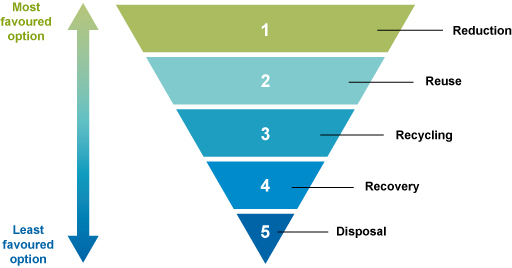Integrated Solid Waste Management (ISWM) represents a contemporary and systematic approach to solid waste management. The U.S. Environmental Protection Agency (EPA) defines ISWM as a complete waste reduction, collection, composting, recycling, and disposal system. An efficient ISWM system considers how to reduce, reuse, recycle, and manage waste to protect human health and the natural environment. It involves evaluating local conditions and needs. Then choosing, mixing and applying the most suitable solid waste management activities according to the condition.
The Importance of ISWM as a Waste Management Approach
With rapid population expansion and constant economic development, waste generation both in residential as well as commercial/industrial areas continues to grow rapidly, putting pressure on society’s ability to process and dispose of this material. Also, inappropriately managed solid waste streams can pose a significant risk to health and environmental concerns. Improper waste handling in conjunction with uncontrolled waste dumping can cause a broad range of problems, including polluting water, attracting rodents and insects, as well as increasing floods due to blockage in drains.
As well, it may bring about safety hazards from explosions and fires. Improper solid waste management can also increase greenhouse gas (GHG) emissions, thus contributing to climate change.
Having a comprehensive waste management system for efficient waste collection, transportation, and systematic waste disposal—together with activities to reduce waste generation and increase waste recycling—can significantly reduce all these problems. While nothing new, an ISWM approach provides the opportunity to create a suitable combination of existing waste management practices to manage waste most efficiently.
Functional Elements of Integrated Solid Waste Management
The four components or functional elements of ISWM include source reduction, recycling and composting, waste transportation and landfilling. These waste management activities can be undertaken either in interactively or hierarchically.
Following are brief discussion of each of these functional elements of ISWM:
Source Reduction, also known as waste prevention, aims at reducing unnecessary waste generation. Source reduction strategies may include a variety of approaches, such as:
- products that are designed for recycling, durable, sustainable goods and, where possible, in concentrated form.
- reusable products, including reusable packaging, as reuse and increasingly becomes an important component of the circular economy.
- refurbishing of goods to prolong product life, another important element of the circular economy model.
- redesign of goods and utilize less or no packaging.
- reduction of food spoilage and waste through better attention to food processing and storage
- avoidance of goods that don’t last long and can’t be reused or recycled, such as Halloween decorations.
- Waste source reduction helps us to lessen waste handling, transportation, and disposal costs and eventually reduces methane generation.
Recycling and Composting are crucial phases in the entire ISWM process. Recycling includes the accumulation, sorting and recovering of recyclable and reusable materials, as well as the reprocessing of recyclables to produce new products. Composting, a component of organics recycling, involves the accumulation of organic waste and converting it into soil additives. Both recycling and composting wastes have a number of economic benefits such as they create job opportunities in addition to diverting material from the waste stream to generate cost-effective sources of material for further use. Both recycling and composting also significantly contribute to the reduction of greenhouse gas emissions.
Waste Transportation is another waste management activity that must be integrated systematically with other waste management activities to ensure smooth and efficient waste management. Typically this includes the collection of waste from curbside and businesses, as well as from transfer stations where waste may be concentrated and reloaded onto other vehicles for delivery to the landfill.
Waste Disposal, in particular through the use of landfills and combustion, are the activities undertaken to manage waste materials that are not recycled. The most common way of managing these wastes is through landfills, which must be properly designed, well-constructed and systematically managed.


